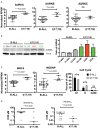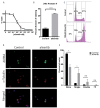Aurora A kinase as a target for therapy in TCF3-HLF rearranged acute lymphoblastic leukemia
- PMID: 34233449
- PMCID: PMC8561293
- DOI: 10.3324/haematol.2021.278692
Aurora A kinase as a target for therapy in TCF3-HLF rearranged acute lymphoblastic leukemia
Figures



References
-
- Panagopoulos I, Micci F, Thorsen J, et al. . A novel TCF3-HLF fusion transcript in acute lymphoblastic leukemia with a t(17;19)(q22;p13). Cancer Genet. 2012;205(12):669-672. - PubMed
Publication types
MeSH terms
Substances
Grants and funding
LinkOut - more resources
Full Text Sources
Other Literature Sources

